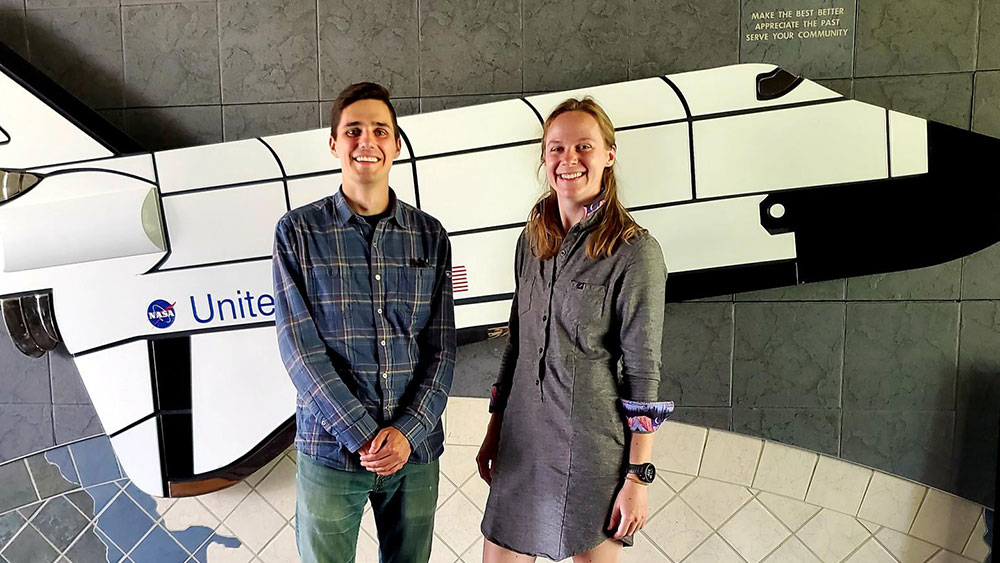
Patrick Walgren and Hannah Stroud, doctoral students in the Department of Aerospace Engineering at Texas A&M University, traveled to Alaska to spend a few days helping first- and second-graders learn about space.
Growing up there, Walgren had one of his first introductions to aerospace at the Challenger Learning Center of Alaska. Now that he’s preparing for a career as an aerospace engineer, on a whim, he reached out to the center about volunteering at the Space Academy, their aerospace-themed camp. He and Stroud were invited to join the staff as “flight directors” and help facilitate activities for the students.
“A lot of what we were doing was giving them an introduction to space and how space scientists think about space,” said Stroud. “It was a lot of making introductory connections so that the students had something to reference with their own world.”
One of the popular activities with the campers was a planet walk, where together, they made a scale model of the solar system. They started with a beach ball that represented the sun and then walked as many steps away from it as a marble-sized Mercury would be. By the time they were out at Neptune, the students could barely see the beach ball sun, giving them context to the vast size of space and our solar system.
“The funniest thing about the planet walk was that we couldn’t find Mercury on the way back,” said Walgren. “It was perfect. It’s this little marble in the grass, and it showed the kids how hard it is to find planets like this and to imagine how hard it is to land something on Mars.”
Another activity that was a hit with the 7- and 8-year-olds was an aerospace version of the egg drop activity. An egg-stronaut was attached to a wooden space shuttle model, and the student’s job was to protect the egg on reentry, which was a zip line off the roof of a building to a hard surface. Stroud said it was a well-contextualized activity, and the staff did a good job of ensuring the kids understood the reason behind protecting the egg.
“One of the things I tried to highlight when working with the kids is why they made the engineering decisions they did,” Stroud said. I asked them what materials they wanted where and why, and what they thought it was going to do.”
Over the course of the camp, it was inspiring to Walgren and Stroud to see how much the kids did know and understand.
“There was a kid who was talking about turbulence, and he wasn’t totally right, but he wasn’t totally wrong either,” said Walgren. “You just focus on the stuff that he was right about and encourage that for as long as you can.”
Ultimately, their goal was to help facilitate a space for young students in Alaska to be exposed to aerospace engineering. But the experience turned out to be a valuable professional development opportunity for them too.
“It was a great exercise in knowing your audience,” said Stroud. “You can still explain really complex topics, and they’ll understand it; you just have to use words, phrases and analogies that they have experience with. It was a challenging exercise to make sure that I was communicating effectively with a group I don’t normally communicate with.”
Walgren and Stroud were excited to have had the opportunity to give the campers role models to look to as examples of what they can do when they grow up. They also hope to return to future camps at the center, this time, with a few more Texas A&M student volunteers.